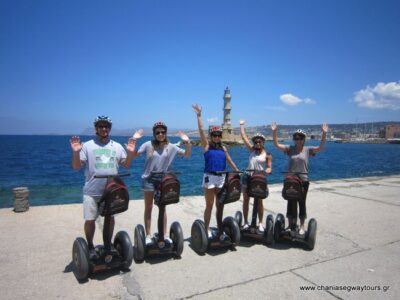If you want to travel on a budget and experience a mixture of modernity and Asian tradition, Taipei is the place to be. Its official name is Taipei City and it’s the capital both of Taiwan (officially the Republic of China) and of a special municipality. The city is located in the North of the island and with its 2.7 million inhabitants it’s the economic capital of the country. Together with its many cultural sights, the city offers an exciting nightlife, lively shopping streets and colorful markets. Here is a list of the sights you cannot miss if you decide to travel to Taipei:

Taipei 101
Formerly known as the Taipei World Financial Center, Taipei 101 is a 509 m high skyscraper that towers over the city. It was officially classified as the world’s tallest building from its opening in 2004 until 2010, when the Burj Khalifa in Dubai was completed. Until 2011 it also held the title of tallest green building of the world. Visitors can take the lift to the top and reach the 89th floor in just 40 seconds. It was designed to resemble a bamboo stick and it is flexible and resistant enough to withstand typhoon winds and earthquakes. In good weather conditions, visitors can also access the viewpoint on the 91st floor. If you travel to Taipei in late December, don’t miss the breathtaking New Year’s Eve fireworks display, which is a regular feature in international broadcasts.
Chiang Kai-shek Memorial Hall
The building was erected in memory of Generalissimo Chiang Kai-shek, former President of the Republic of China. It is located in Liberty Square, together with the National Theater and National Concert Hall and it’s surrounded by a park. Visitors can enter the main hall via a series of 89 steps (Chiang’s age when he died). The building hosts a permanent exhibition about his life and many temporary exhibitions. Most tourists come to the site to see the hourly changing of the guard and the flag raising at dawn and lowering at dusk.
National Palace Museum
This outstanding museum is home to the world’s largest and finest collection of Chinese art and hosts equally fascinating temporary exhibitions. It’s an unmissable stop for culture lovers and everyone interested in painting, calligraphy, statuary, bronzes, lacquerware, ceramics, jade and religious objects. One of its most popular artworks is the Jadeite Cabbage, a piece of jadeite carved into the shape of a Chinese cabbage head with a locust and katydid camouflaged in the leaves.

Longshan Temple
Longshan Temple is a Chinese folk religious temple built in Taipei in 1738 by settlers from Fujian during Qing rule in honor of Guanyin. The settlers used the temple as a place of worship and gathering. It includes Buddhist elements and halls and altars to Chinese deities such as Mazu and Guan Yu. Longshan Temple is the most famous temple in Taiwan and has survived innumerable earthquakes, typhoons, and wars. Sadly, it was damaged by American bombers during World War II because the Japanese were reportedly hiding armaments there. After the end of the war it was promptly restored by members of the local community.
Dihua Street
Also known as “Centre Street”, this road was constructed during the 1850s and since then it has been an important centre for the commerce of Taiwanese products and produce such as Chinese medicinal herbs, fabrics, incense materials, for the post-processing of Taiwanese tea and for the Lunar New Year sundry market. Despite the numerous new shops, cafes, restaurants and art studios, the street has kept its original flair, with long-term tenants still selling their agricultural produce next to new fancy ceramic shops.
Fort San Domingo
This historic fortress was originally a wooden fort built in 1628 by the Spanish Empire, who also destroyed it after losing the Second Battle of San Salvador to the Dutch Empire in 1642. It was then rebuilt by the Dutch, repaired by the Quing government and later used as a consulate by the British government. After a brief occupation by the Japanese Government, it was returned to British control after the Pacific War. The site has been used as an unofficial British embassy until 1972. Afterwards, the fortress was temporarily managed by Australia and the United States, before being returned to the government of Republic of China in 1980. Since then, it has been a National Historical Site, open to both tourists and researchers.
Shung Ye Museum of Formosan Aborigines
If you are interested in finding out more about the cultures and histories of the Taiwanese aborigines, this is the right place for you. The aboriginal tribes live mainly in the mountainous east and south of Taiwan and have historically spoken a variety of Austronesian languages. The museum is known for its white granite totem pole at the entrance and it hosts both permanent and rotating exhibits.

Taipei Confucius Temple
Constructed in the late 1920s, this temple is an example of Minnan-style architecture and of Taiwan’s decorative arts. The style of the temple is simple, as Confucius valued simplicity. But it wasn’t just built in honour of Confucius, but also in honour of the greatest philosophers and teachers of all times. Its columns, doors, and windows bear no inscriptions, as it is said that nobody dares flaunt his literary prowess before the Master. In this temple there aren’t any images, as in the 1500s, during the reign of emperor Shi cong it was decreed that all existing images of Confucius had to be replaced with memorial tablets and this rule is still followed today.
Taipei is the perfect destination for those who want to go Backpacking in Taiwan. Luckily, Taiwan hasn’t yet been hit by mass tourism, so it is the perfect time to plan a trip there, before it happens.











Comments